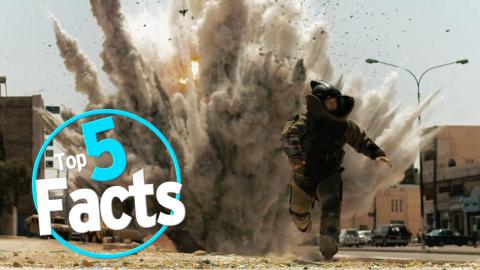Top 5 Facts About Bomb Squads

For Bomb Squads, the primary objective has always been clear. But over time, their techniques have evolved, and media representations of their trade have not always been accurate. Welcome to WatchMojo's Top 5 Facts. In today's instalment, we're counting down the five most interesting things we could learn about Bomb Squads.
Special thanks to our users speechjon or submitting the idea using our interactive suggestion tool at http://www.WatchMojo.comsuggest
#5:Bomb Disposal Practices Evolved During World War I
Over the course of World War I, munitions manufacturing was a flawed process and, this caused major problems on the battlefield; many shells never detonated. On top of the sheer destruction and chaos the Great War brought, nobody quite knew how to deal with the unexploded bombs, or UXBs, that littered battlefields, so informal disposal units learned the appropriate skills. Seeing how UXBs could actually be more destructive than bombs that exploded immediately, during WWII German forces dropped many bombs on England that had delayed-action fuses. Britain reacted by training large numbers of bomb disposal personnel. Soon after, Germans implemented anti-handling devices into their bombs designed to kill those personnel. This was just the start of a long-running battle between bombmakers and bomb disposal experts to stay one step ahead of each other. Today, in the 21st century, the rise of global terrorism has ensured that that race persists.
#4: The “Wheelbarrow” and “Robot” Originated in 1972
By 1971, the Irish Republican Army began to actively engage British Troops in Northern Ireland, planting various types of makeshift bombs. As a result, the British adapted with the creation of a remote-controlled robot known as the “wheelbarrow.” It was so-called because Lieutenant-Colonel Peter Miller literally built the thing on top of a motorized wheelbarrow. The first model was steered with ropes and had little more than a grappling hook in the way of tools. Bomb disposal robots used today are often still known as “Wheelbarrows,” though they’ve got more than just a hook on them. Over the next six years, over 400 wheelbarrows would be destroyed in the line of duty, presumably saving an equal number of human lives.
#3: Many Techniques Are Used for Bomb Disposals
Because of that arms-slash-disarmament race we just referenced, many specifics of the Explosive Ordinance Disposal trade are kept secret. But we do know some things. Contrary to popular belief, modern bomb technicians handle their business remotely. Of course, hands-on techniques were used in both World Wars, but that was mainly before the “Wheelbarrow” came along. And while protective suits do exist for technicians to execute physical inspections, distance is key. Modern wheelbarrows are often equipped with tools that allow bomb techs to also use high pressure jets of water, or acid to remotely dismantle bombs. Of course, before they go trying to drown or melt every suspicious package they find, they’ll often use a portable X-ray device to get a look inside it.
#2: Hollywood Is a Purveyor of Bomb Squad Myths
Hollywood continues to highlight the “red switch” myth. In other words, if there’s a bomb in movies or TV, someone just has to get up close and personal to cut the wire. In reality, they would much rather deal with it from a distance. They may even use a sniper rifle to shoot the thing. They also don’t work in heroic one-man teams. No, there’s usually at least three techs working together, plus others to watch the perimeter and provide support. So why does Hollywood continue to pedal these myths when you can easily fact check this stuff online? Probably for entertainment value, and possibly because pyrotechnicians and practical effects crews are not bomb techs.
#1: Shrapnel is not the Biggest Threat for Technicians
Anyone who has ever played a shooter game knows the deadly part of a frag grenade is the shrapnel. So you might assume that shrapnel is the bomb tech’s biggest fear. However, the 90-pound blast suit made from kevlar, foam and plastic, protects pretty effectively in that regard. Almost too well, actually; those layers make it hot as hell for tech inside, giving them as little as 10 minutes to do their work in extreme conditions before the heat stress is overwhelming. Some suits have built in cooling systems, but that adds to their weight. Even more deadly than the heat is an explosion’s shock wave. The highly pressurized supersonic blast wave can cause internal injuries, potentially collapsing or exploding internal organs, without necessarily causing any visible external damage. Only in recent years have bomb suits started incorporating various kinds of foam to deal with this threat.
So, what fact surprises you the most about bomb squads? And do you know of any movies that truly get the facts right? For more 90-pound top 10s and unexploded Top 5s, be sure to subscribe to WatchMojo.com
